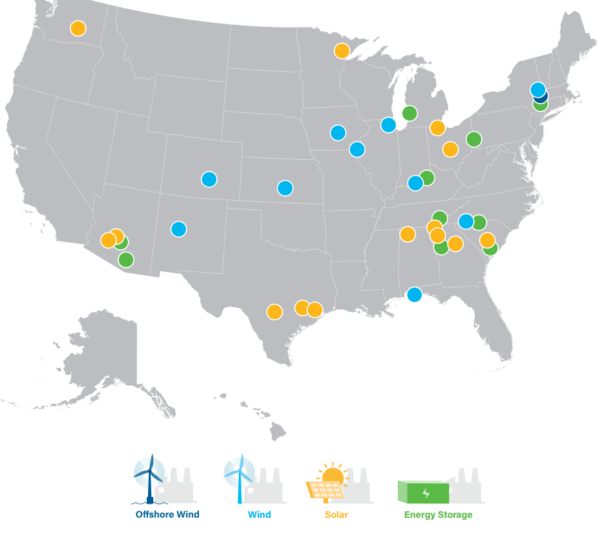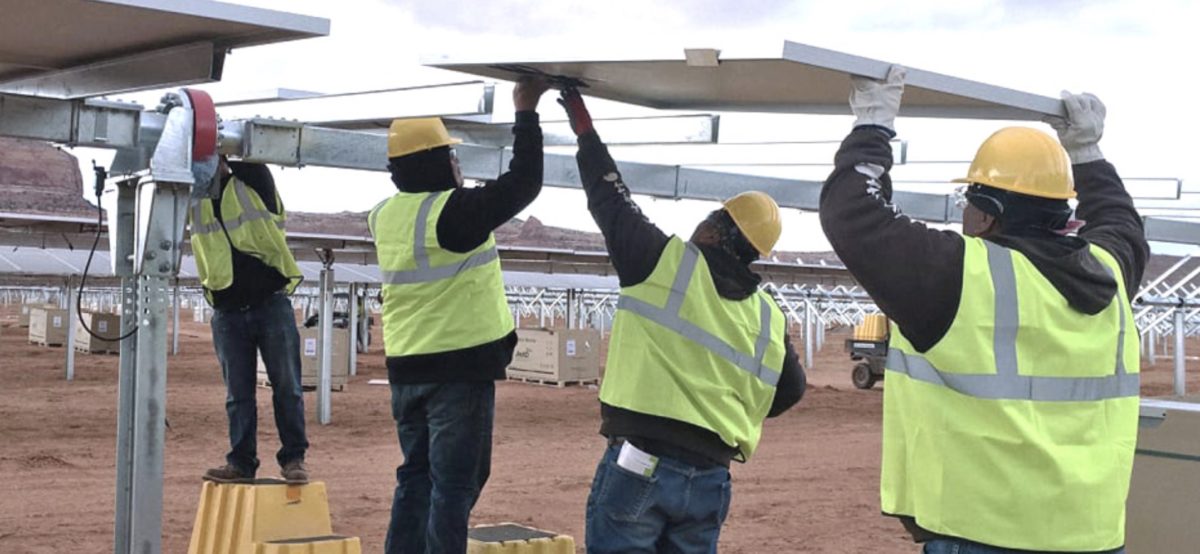Over the last eight months, following the passage of the Inflation Reduction Act (IRA) of 2022, over $150 billion in domestic utility-scale clean power investments have been announced, according to the American Clean Power Association (ACP).
This unprecedented level of investment exceeds the total investment in utility-scale clean power projects brought online in the five previous years combined, spanning 2017 to 2021. Over 96 GW of utility-scale projects have been announced over the eight month stretch, said ACP.
Solar is set to play a central role in decarbonizing and onshoring U.S. energy. By 2030, it is estimated the IRA will drive the installation of 950 million solar panels, 120,000 wind turbines, and 2,300 grid-scale battery facilities.
While the investments are a clear sign of the promising progress towards a decarbonized economy, ACP warns that more action needs to be taken to ensure that future.
“To realize this clean energy future and ensure the full potential of these projects, ACP urges the Administration and Congress to continue improving trade policies, supporting next-generation technologies, finalizing effective tax implementation and working to enact commonsense permitting reform,” said the report, entitled Clean Energy Investing in America.
ACP shared in the report that in the eight-month period, 46 utility-scale clean energy manufacturing facilities were announced, bringing an expected 18,000 or more U.S. jobs.
Across the 46 announced facilities, 26 are solar manufacturing sites, 10 are utility-scale battery storage factories, 10 are wind power fabrications, two of which are for offshore wind technology development. The report contains a full roundup of each of the manufacturing sites, the expected jobs created, the expected online date, investment data, and other relevant information.

Image: ACP
The largest single-site announcement was the Hanwha Qcells facility, which will entail an investment of $2.5 billion to expand the company’s manufacturing capacity in the U.S., and is expected to create as many as 2,500 jobs in Georgia. The factory will address several legs of the solar supply chain, from polysilicon ingots, to wafers, cells and modules.
A battery facility of note is American Battery Factory’s site to manufacture lithium-iron-phosphate battery cells for residential and commercial energy storage. The site, expected to come online in Q4 2024, would represent $3.1 billion in economic activity in its local county, bringing roughly 1,000 Arizona jobs.
In addition to the declared sites tracked in the report, 11 additional facilities have not yet announced locations, including: PV Hardware, Enphase Energy, SolarEdge, Enel, Canadian Solar, CubicPV, GameChange Solar, Hanwha & LG Solutions, Linton Crystal Technologies, Trading Philadelphia, and Mitrex.
The report said that over $4.4 billion in expected savings for over 24 million ratepayers was announced across utility markets. This includes $56 million in projected annual savings from Duke Energy Florida.
“We understand our customers need some relief, and this is an opportunity for Duke Energy to pass tax savings to our customers,” said Duke Energy Florida State President Melissa Seixas.
Utility WEC Energy Group projects customer savings of $2 billion as it targets 3.3 GW of new renewable resources, including 1.9 GW of solar, 720 MW of storage, and 670 MW of wind. Michigan utility DTE Energy said the Inflation Reduction Act lowered its 20-year resource plan by about $500 million.
Minnesota utility Xcel Energy estimates $490 million in incremental savings for existing projects through 2027 and an estimated $1 billion in additional savings for new projects through 2034 under the IRA.
“If completed, these investments and projects will strengthen our energy independence, improve air quality, support one million American clean energy jobs, and put us on track to produce enough affordable domestic clean electricity to power the equivalent of every American home by 2030,” said ACP.
IRA spending, which includes $369 billion for climate and energy, will be supported by closing tax loopholes for the wealthiest Americans and corporations, said the law’s authors. The administration said 55 of the largest U.S. corporations paid no taxes in 2020, and the top 1% of earners are estimated to legally avoid $160 million in taxes annually. Closing those get-outs and levying a minimum 15% tax on the most profitable corporations will capture $124 billion in previously lost government revenue over a decade, said the Biden Administration.
This content is protected by copyright and may not be reused. If you want to cooperate with us and would like to reuse some of our content, please contact: editors@pv-magazine.com.









Why is no one talking about the requirement to have PLA’s in place on all IRA projects over 1MW
PLA’s are a union tool and the requirement of PLA’s is discrimination against 90% of the construction industries employees in the US